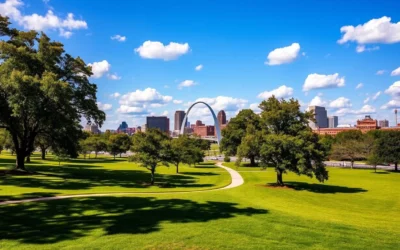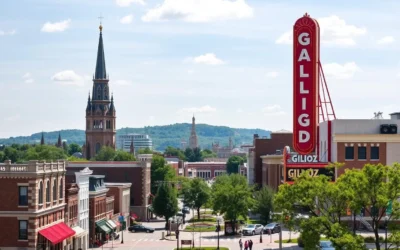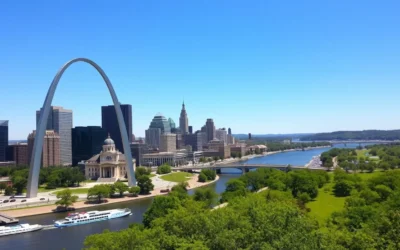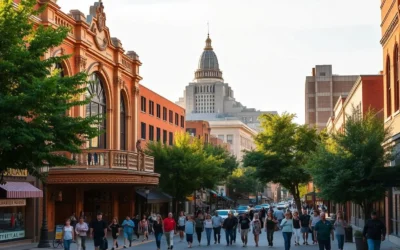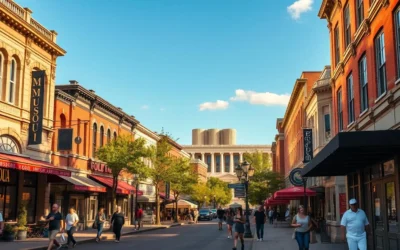✓ Accommodations ✓ Flights ✓ Rental Cars
As you explore the diverse cultural heritage of Missouri, you’ll find that the state’s linguistic landscape is just as fascinating. With a rich history and demographic composition, Missouri is home to a multitude of languages spoken by various communities.
The language demographics of Missouri provide valuable insights into the state’s cultural diversity and immigration patterns. You’ll gain a deeper understanding of the top non-English languages spoken throughout the state and how they impact the cultural landscape.
By examining the linguistic makeup of Missouri, you’ll discover how language services and accessibility have evolved to accommodate the needs of diverse language communities.
Language Landscape of Missouri
You can experience a rich linguistic diversity in Missouri, shaped by its history and immigration. Missouri’s language profile is characterized by a dominant language and a multitude of other languages spoken by its diverse population.
Official Language Status
Missouri has designated English as its official language, following the pattern of more than half of all US states. This designation is a result of legislative action, affirming English as the primary language for official purposes.
Linguistic Diversity Overview
Despite English being the official language, Missouri hosts a remarkable linguistic diversity. Approximately 6.2% of the population aged four and up (around 383,033 people) speaks a non-English language at home. This diversity is a reflection of the state’s immigrant communities and cultural heritage.
| Language Spoken at Home | Percentage of Population | Number of People |
|---|---|---|
| English | 93.8% | 5,816,967 |
| Non-English Languages | 6.2% | 383,033 |
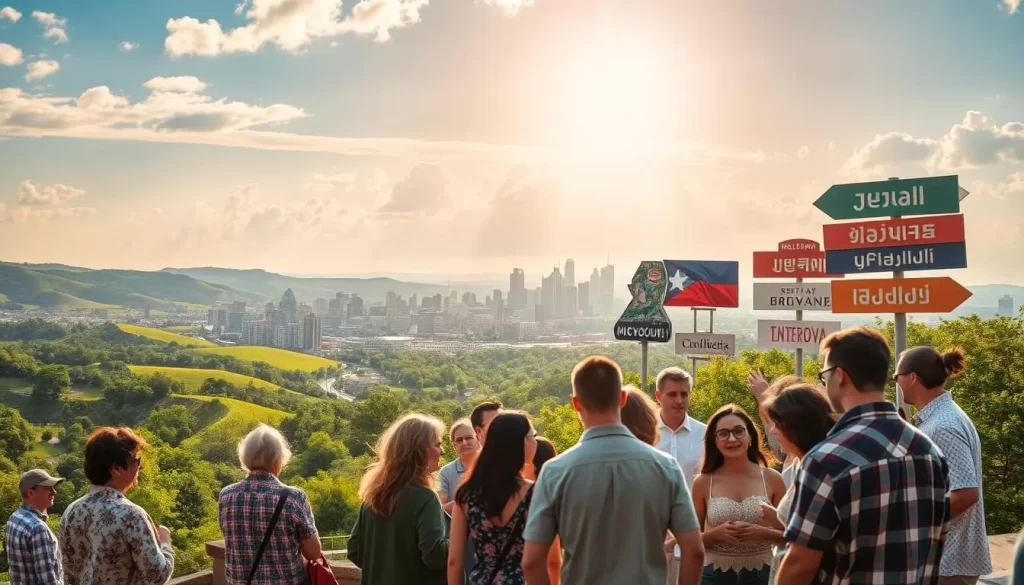
Understanding Missouri’s language landscape is crucial for planning educational, healthcare, and government services. As you explore the state’s linguistic diversity, you’ll find that many immigrant communities maintain their native languages while also learning English, creating bilingual households throughout Missouri.
Historical Context of Languages in Missouri
As you explore the history of languages in Missouri, you’ll discover a rich narrative that reflects the state’s diverse cultural heritage. The state’s linguistic landscape has been shaped by the interactions of various cultures over centuries.
Indigenous Languages
Initially, the only inhabitants of Missouri were indigenous people, with many native tribes originally calling the area home. Many indigenous languages faced decline as native populations were forcibly relocated during events like the Trail of Tears in the early 19th century.
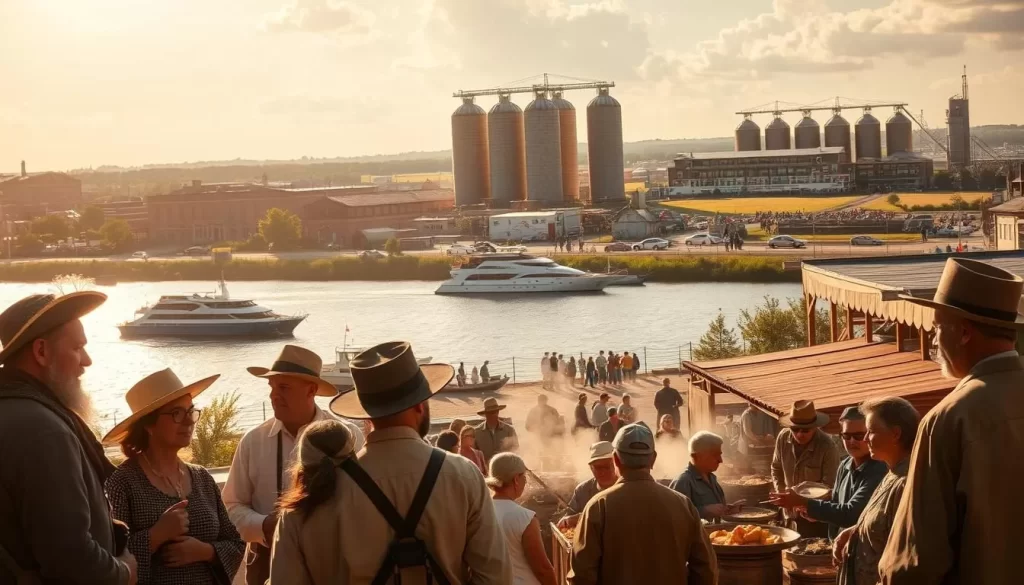
European Settlement Influence
European settlers began arriving in the 18th century, with French being one of the first European languages to gain prominence. The 19th century saw waves of immigrants from England, Ireland, and Germany, each bringing their native languages and establishing linguistic enclaves throughout the state.
20th Century Immigration Patterns
The 20th century brought significant changes to Missouri’s linguistic landscape. The state’s growing cities attracted diverse immigrant groups, including Greeks, Italians, and Poles, creating multilingual urban communities. By World War II, Missouri was home to approximately 20 European ethnic groups. The latter part of the 20th century saw a significant increase in Hispanic immigrants, mainly from Mexico, and an increase in the Asian population, with languages like Chinese, Vietnamese, and Korean being added to the state’s language mix.
Missouri, United States: Official and Widely Spoken Languages
As you explore the language dynamics in Missouri, you’ll find that English is the official language, but there’s more to the story. The state’s linguistic landscape is shaped by its history, demographics, and the needs of its residents.
English as the Official Language
English maintains its position as the official language of Missouri, codified through state legislation that recognizes its primary status in government, education, and official communications. This status reflects the language’s widespread use among the state’s approximately 6.18 million residents.
Language Demographics and Statistics
Current language demographics reveal that among Missouri’s residents, the vast majority speak English as their primary language. However, statistical analysis shows that about 6.2% of Missouri’s population aged four and older, approximately 383,033 people, regularly speaks a non-English language at home.
Limited English Proficiency (LEP) Population
The Limited English Proficiency (LEP) population in Missouri comprises about 2.28% of residents, approximately 140,857 people, who face challenges with English communication. You’ll find that LEP individuals often require translation and interpretation services to access essential government services, healthcare, and educational opportunities. Language accessibility has become increasingly important as Missouri’s population becomes more linguistically diverse.
Top 10 Non-English Languages in Missouri
You might be surprised at the variety of languages spoken in Missouri. The state’s linguistic diversity is a reflection of its cultural richness and history of immigration. As you explore the top 10 non-English languages spoken in Missouri, you’ll gain insight into the communities that call the state home.
Spanish
Spanish is the most widely spoken non-English language in Missouri, with approximately 149,698 speakers, making up about 2.60% of the state’s population. This significant presence is a testament to the growing Hispanic community in the state.
Chinese (Including Cantonese and Mandarin)
Chinese, encompassing both Cantonese and Mandarin dialects, is the second most common non-English language, spoken by around 23,747 residents or 0.41% of Missouri’s population. This reflects the influence of Chinese immigration on the state’s cultural landscape.
German
German ranks third, with an estimated 19,321 speakers making up about 0.34% of the state’s residents. This heritage is a nod to the historical ties between Missouri and Germany.
Vietnamese
Vietnamese has established a significant presence in Missouri, with approximately 14,631 speakers, representing about 0.25% of the population. This highlights the impact of Vietnamese immigration on the state’s diversity.
Serbo-Croatian
Serbo-Croatian completes the top five, with around 13,979 speakers or 0.24% of Missouri’s population. This language community contributes to the state’s rich cultural tapestry.
Arabic
Arabic speakers number approximately 13,133 in Missouri, comprising nearly 0.23% of the state’s residents. This reflects the presence of Arabic-speaking communities within the state.
French
French, including Cajun varieties, is spoken by about 11,836 Missourians, representing nearly 0.21% of the population. This linguistic heritage is a reminder of the historical French influence in the region.
Yiddish, Pennsylvania Dutch, and Other West Germanic Languages
The category of Yiddish, Pennsylvania Dutch, and other West Germanic languages accounts for approximately 9,670 speakers or 0.17% of Missouri residents. This diverse linguistic group adds to the state’s cultural richness.
Tagalog
Tagalog, including Filipino, is spoken by an estimated 8,518 people in Missouri, representing about 0.15% of the state’s population. This highlights the contribution of Filipino communities to Missouri’s diversity.
Russian
Russian rounds out the top 10, with approximately 6,983 speakers, making up about 0.12% of Missouri’s population. This reflects the presence of Russian-speaking communities within the state.
The diversity of languages spoken in Missouri necessitates the availability of translation services in various sectors such as healthcare, legal, and education. Understanding the linguistic demographics is crucial for providing accessible services to all residents.
| Language | Number of Speakers | Percentage of Population |
|---|---|---|
| Spanish | 149,698 | 2.60% |
| Chinese | 23,747 | 0.41% |
| German | 19,321 | 0.34% |
| Vietnamese | 14,631 | 0.25% |
| Serbo-Croatian | 13,979 | 0.24% |
| Arabic | 13,133 | 0.23% |
| French | 11,836 | 0.21% |
| Yiddish, Pennsylvania Dutch, and Other West Germanic Languages | 9,670 | 0.17% |
| Tagalog | 8,518 | 0.15% |
| Russian | 6,983 | 0.12% |

Impact of Language Diversity in Missouri
Language diversity in Missouri has far-reaching effects on various aspects of life in the state. The diverse linguistic landscape has enriched the cultural heritage and enhanced the community.
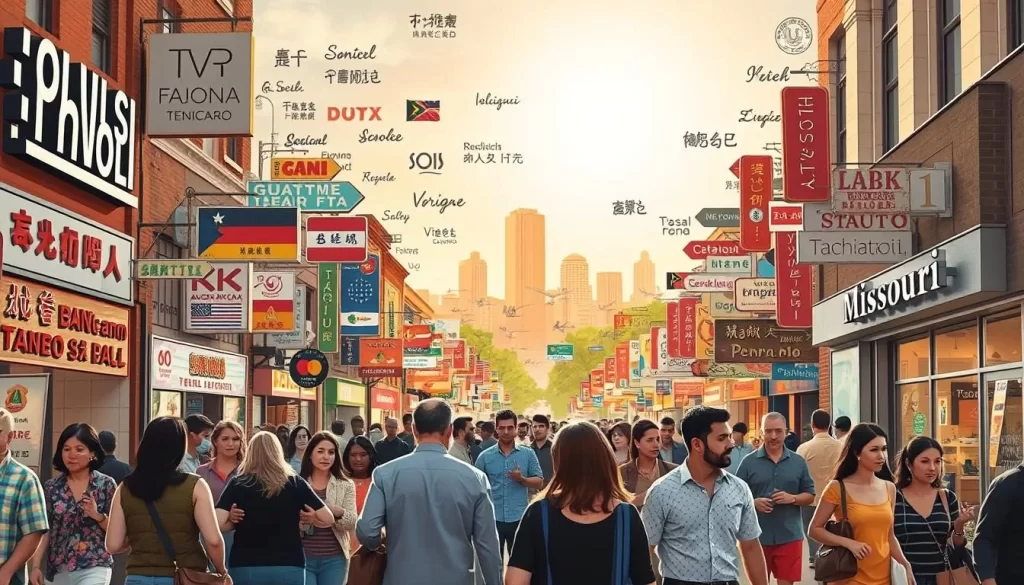
Cultural Contributions
The diverse language communities in Missouri have made significant cultural contributions. You can experience this diversity through:
- Festivals celebrating different cultures
- Cuisine from various ethnic backgrounds
- Arts and traditions brought by different language speakers
This diversity has created a vibrant cultural landscape, with communities establishing cultural centers, restaurants, and businesses that contribute to the economic and social fabric of Missouri cities.
Language Services and Accessibility
The growing demand for translation and interpretation services has led to advancements in language accessibility. You can find:
- Translation services in healthcare, legal, educational, and government settings
- Multilingual materials and services provided by government agencies
- Technology improving language accessibility through translation apps and multilingual websites
This has ensured that people with limited English proficiency have access to essential services and information.
Conclusion
As you explore Missouri, you’ll discover a complex linguistic landscape shaped by its people and history. The state’s language diversity is a significant aspect of its identity, with English being the official language. Missouri is home to a vibrant tapestry of languages spoken, including a list of non-English languages that continue to evolve. This diversity presents both opportunities and challenges for various sectors, including education and healthcare. Understanding the languages spoken in Missouri helps businesses and government agencies better serve all residents. As the population evolves, so will the demand for translation services.
The above is subject to change.
Check back often to TRAVEL.COM for the latest travel tips and deals.

